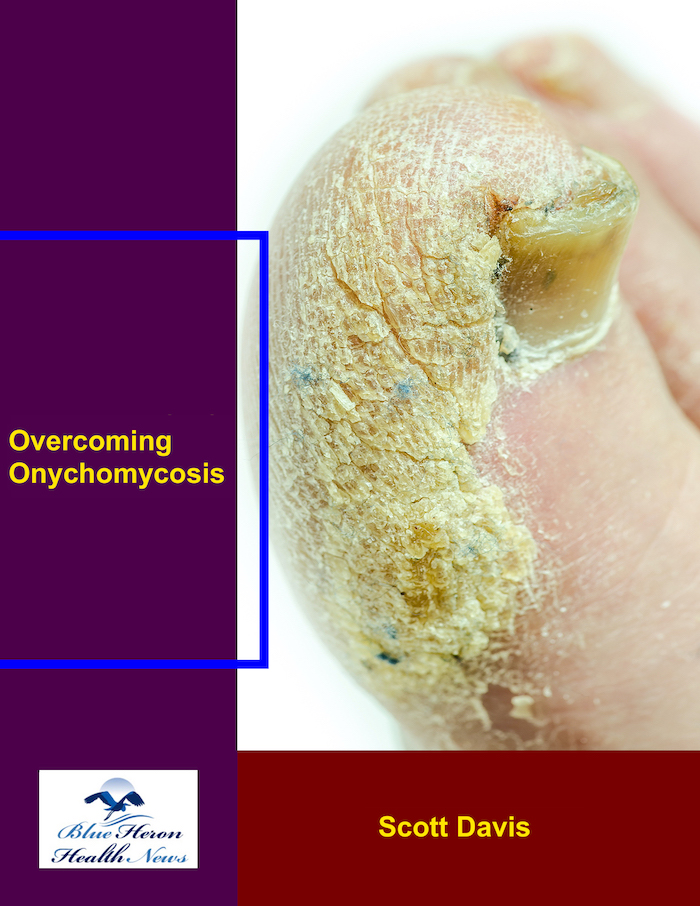
Overcoming Onychomycosis™ By Scott Davis If you want a natural and proven solution for onychomycosis, you should not look beyond Overcoming Onychomycosis. It is easy to follow and safe as well. You will not have to take drugs and chemicals. Yes, you will have to choose healthy foods to treat your nail fungus. You can notice the difference within a few days. Gradually, your nails will look and feel different. Also, you will not experience the same condition again!
What are the different types of onychomycosis?
Onychomycosis is a fungal infection of the nails, usually affecting the toenails more than the fingernails. There are several types of onychomycosis, each characterized by the pattern of nail involvement and the type of fungus causing the infection. Here are the different types:
1. Distal Subungual Onychomycosis (DSO)
- Description: This is the most common type of onychomycosis. The infection begins at the distal (far) edge of the nail and spreads underneath the nail (subungual) toward the cuticle.
- Appearance: The nail may become discolored (yellow, brown, or white), thickened, brittle, and deformed. The nail often lifts away from the nail bed (onycholysis).
- Cause: Typically caused by dermatophytes, particularly Trichophyton rubrum.
2. Proximal Subungual Onychomycosis (PSO)
- Description: This type of onychomycosis is less common and usually starts at the proximal (near the cuticle) end of the nail and spreads toward the nail edge.
- Appearance: The base of the nail near the cuticle becomes white and discolored, with the infection spreading outward.
- Cause: PSO is often associated with immunocompromised individuals, including those with HIV. It is also caused by dermatophytes like Trichophyton rubrum.
3. White Superficial Onychomycosis (WSO)
- Description: This type affects only the surface of the nail, rather than penetrating deeply under the nail.
- Appearance: The nail develops white, chalky spots on the surface, which may later cover the entire nail. The nail may become rough, crumbly, and brittle but typically does not thicken as in other types of onychomycosis.
- Cause: Usually caused by dermatophytes, particularly Trichophyton mentagrophytes.
4. Candida Onychomycosis
- Description: Candida onychomycosis is caused by yeasts of the genus Candida, rather than dermatophytes. It most commonly affects fingernails rather than toenails.
- Appearance: The nail can become yellow, brown, or white, with thickening, deformation, and sometimes complete nail detachment. There may also be inflammation or infection of the surrounding skin (paronychia).
- Cause: Candida albicans and other Candida species, often in individuals with chronic exposure to moisture (e.g., frequent hand washing), or those with weakened immune systems.
5. Total Dystrophic Onychomycosis (TDO)
- Description: This is the most advanced form of onychomycosis and can result from the progression of any of the other types.
- Appearance: The entire nail becomes thickened, deformed, discolored, and often destroyed. The nail may crumble or completely detach from the nail bed.
- Cause: Can result from longstanding infection by dermatophytes, yeasts, or non-dermatophyte molds.
6. Endonyx Onychomycosis
- Description: This is a less common form of onychomycosis where the infection is limited to the interior of the nail plate without involving the nail bed.
- Appearance: The nail may appear white and opaque, but the surface remains smooth, and there is no lifting of the nail from the nail bed (onycholysis).
- Cause: Typically caused by dermatophytes like Trichophyton soudanense and Trichophyton violaceum.
Summary of Onychomycosis Types:
- Distal Subungual Onychomycosis (DSO): Common, starts at the nail edge.
- Proximal Subungual Onychomycosis (PSO): Starts near the cuticle, often in immunocompromised individuals.
- White Superficial Onychomycosis (WSO): Affects the surface of the nail.
- Candida Onychomycosis: Caused by yeast, affects fingernails more than toenails.
- Total Dystrophic Onychomycosis (TDO): Advanced, severe nail destruction.
- Endonyx Onychomycosis: Limited to the interior of the nail plate.
Each type of onychomycosis may require different treatment approaches depending on the extent and severity of the infection.
Overcoming Onychomycosis™ By Scott Davis If you want a natural and proven solution for onychomycosis, you should not look beyond Overcoming Onychomycosis. It is easy to follow and safe as well. You will not have to take drugs and chemicals. Yes, you will have to choose healthy foods to treat your nail fungus. You can notice the difference within a few days. Gradually, your nails will look and feel different. Also, you will not experience the same condition again!